To See a Suribachi
Last week I indulged myself in the sort of pleasure that only a Virgo can understand—I spent about two hours decluttering my bathroom cabinet.
Three events coalesced around this monumental event: (1) I reached the peak of my frustration with the disorder in that space, (2) I realized that my serious hoarding of jam jars and tea tins (I'm convinced that I'll need them someday) had reached a tipping point, and (3) I finished watching the Marie Kondo tidying-up series on Netflix. (I saw little installments whenever my husband traveled for business because there's no way he can tolerate watching people clean out closets and garages. I don't know how anyone can take it except for Virgos and people working on Japanese listening comprehension.)
Marie Kondo advocates using small containers to subdivide a big space, so it dawned on me that what I've been hoarding could serve as a solution to the bathroom cabinet mess. I found it thrilling to sort things into jars, tins, and the like. Here's how it looked afterward:

I posted the photo on Facebook, and to my surprise people were interested. (I have no idea why. If you're still reading, I'll consider it a miracle!) A Japanese-American friend named Joyce surprised me further by asking whether the brown bowl were a suribachi.
I had never thought about it, but I realized that she was exactly right. I was stunned for several reasons:
• How in the world did she know that just from the picture?
• The bowl once belonged to Gail, the friend with whom I did Quilts4Japan in 2011 and whom I blogged about in March after attending her memorial service. She had done a house purge (long before anyone here heard about Kondo) and was hauling off unwanted things when I glanced at the pile in her car, spotted the bowl, and said I liked it. She gladly handed it to me. She didn't know a thing about Japan. How did she come to own a suribachi?
• I've owned the bowl for eight years. Why have I never absorbed the fact that it is ridged on the inside? Well, I can be shockingly oblivious to visual things, so that part fits. But ever since I wrote essay 1032 on 凹 (concave, hollow; sunken), I've been enamored of the idea of suribachis. In the essay, I explored the connection between that kind of bowl and this keyword:
凹凸 (おうとつ: unevenness; roughness; ruggedness) concave + convex
The title of this book makes that connection:
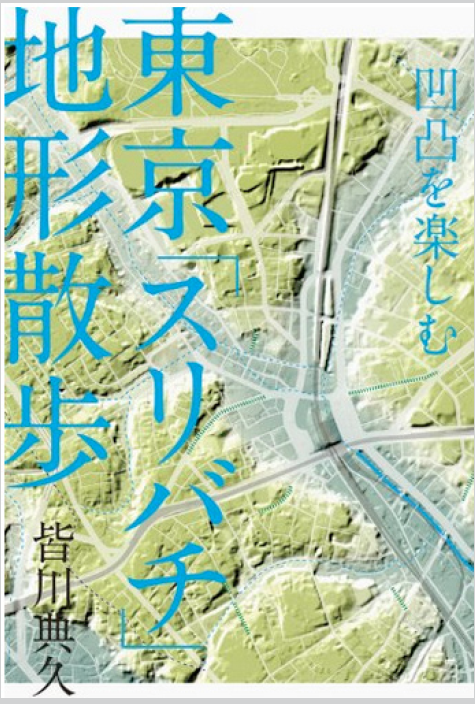
Here's what I wrote about the book title:
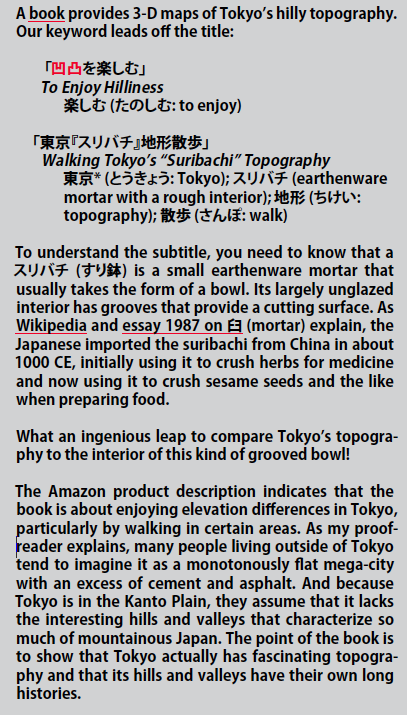
In the growing Facebook thread under the photo of my Kondoized cabinet, I marveled at how Joyce had known that. Then a friend named Hidetomo-san joined the conversation, explaining how he easily recognized the bowl as a suribachi:
器の二色の色、逆円錐形の立ち上がる角度 深さ、深さと開口部との比率 これで分かります。
The colors of the two-toned bowl, the angle of the upside-down cone shape, the depth, and the ratio of the depth to the opening of the bowl all make me recognize it.
器 (うつわ: bowl); 二色 (にしょく: two-color); 色 (いろ: color); 逆- (ぎゃく-: inverted); 円錐形 (えんすいけい: cone shape); 立ち上がる (たちあがる: to stand up, rise); 角度 (かくど: angle); 深さ* (ふかさ: depth); 開口部 (かいこうぶ: aperture); 比率 (ひりつ: ratio); 分かる (わかる: to know)
Wow, wow, wow. Am I going through life blind while others take in every last detail about what they see?
By the way, here's a better shot of a suribachi, this one from Amazon Japan:
Hidetomo-san wrote more comments, and I made the wrong assumption about this one, mistranslating it as follows:
Eveさんが持ってるこれを見て いよいよ 病膏肓に入る の状態かと最初思いましたが 他の人とのやりとりでそうではない事を知りました。
At first when I saw what you have, I thought you had become seriously ill. But from other people's comments, I knew that that wasn't the case.
持つ (もつ: to have); 見る (みる: to see); いよいよ (more and more); 病膏肓に入る (やまいこうこうにいる: to become seriously ill); 状態 (じょうたい: condition); 最初 (さいしょ: beginning); 思う (おもう: to think); 他 (ほか: other); 人 (ひと: person); やりとり ((conversational) exchange); ではない (is not); 事 (こと: nominalizer); 知る (しる: to know)
It turns out that 膏肓に入る has two meanings, and because we were talking about my bathroom cabinet, which contains bottles of medicine (among other things), I thought it was logical to choose the first definition:
病膏肓に入る (やまいこうこうにいる: (1) to become seriously ill; contract an incurable illness; (2) become a slave to a habit)
Actually, he meant the second definition, which is about being so crazy about something such as golf that it has become one's "incurable disease." In this case, says my proofreader, Hidetomo-san was thinking that I'm incurably crazy about kanji and other Japanese things, so this should be the translation of the sentence:
Eveさんが持ってるこれを見て いよいよ 病膏肓に入る の状態かと最初思いましたが 他の人とのやりとりでそうではない事を知りました。
At first when I saw that you have this (suribachi), I thought you had finally and incurably fallen in love with Japanese things. But from other people's comments, I knew that that wasn't the case.
持つ (もつ: to have); 見る (みる: to see); いよいよ (more and more); 病膏肓に入る (やまいこうこうにいる: to become seriously ill); 状態 (じょうたい: condition); 最初 (さいしょ: beginning); 思う (おもう: to think); 他 (ほか: other); 人 (ひと: person); やりとり ((conversational) exchange); ではない (is not); 事 (こと: nominalizer); 知る (しる: to know)
Speaking of my kanji addiction, I couldn't help wondering about 病膏肓, where every character has a 亠 on top. Both 膏 and 肓 are non-Joyo. Here's what they mean:
膏 (deepest part of the body below the heart)
肓 (deepest part of the body above the diaphragm)
The idea, says my proofreader, is that the part between the heart and the diaphragm is the deepest part of the body, and once a disease gets in there, it becomes virtually incurable. These two kanji combine to form this word:
膏肓 (こうこう: incurable disease)
My newest essay touches on the idea of curing people ... by having them eat grass. Well, not people, exactly. More like subhumans. Saitama residents, to be exact. As the essay shows, a new Japanese movie mocks Saitamans to no end. Here's an ad for the movie:
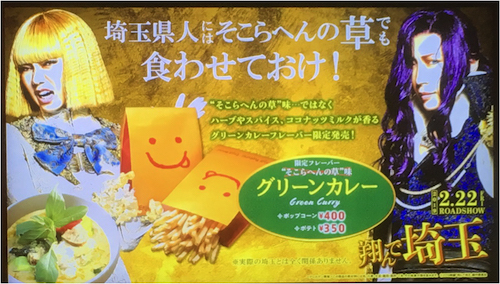
Photo Credit: Lutlam
I explain this image in the essay. Here's a preview of that:
Catch you back here next time!
❖❖❖
Did you like this post? Express your love by supporting Joy o' Kanji on Patreon:

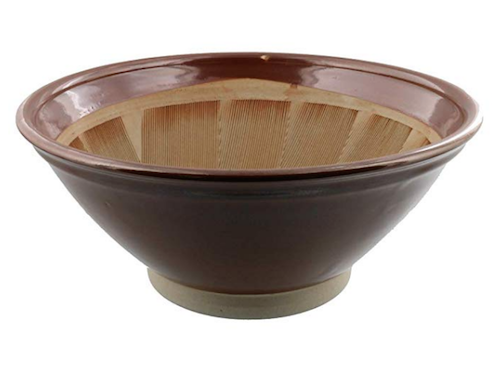
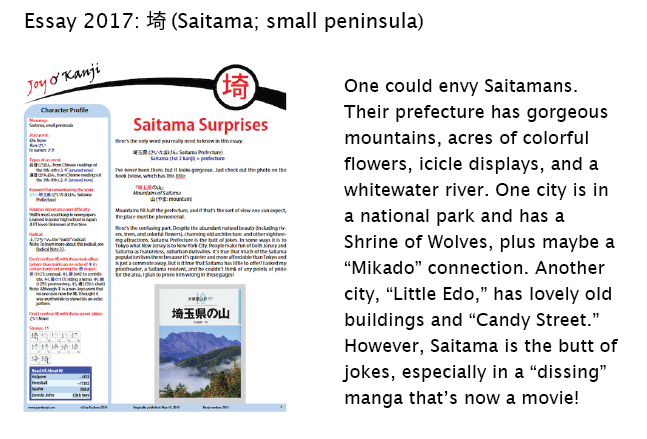

Comments